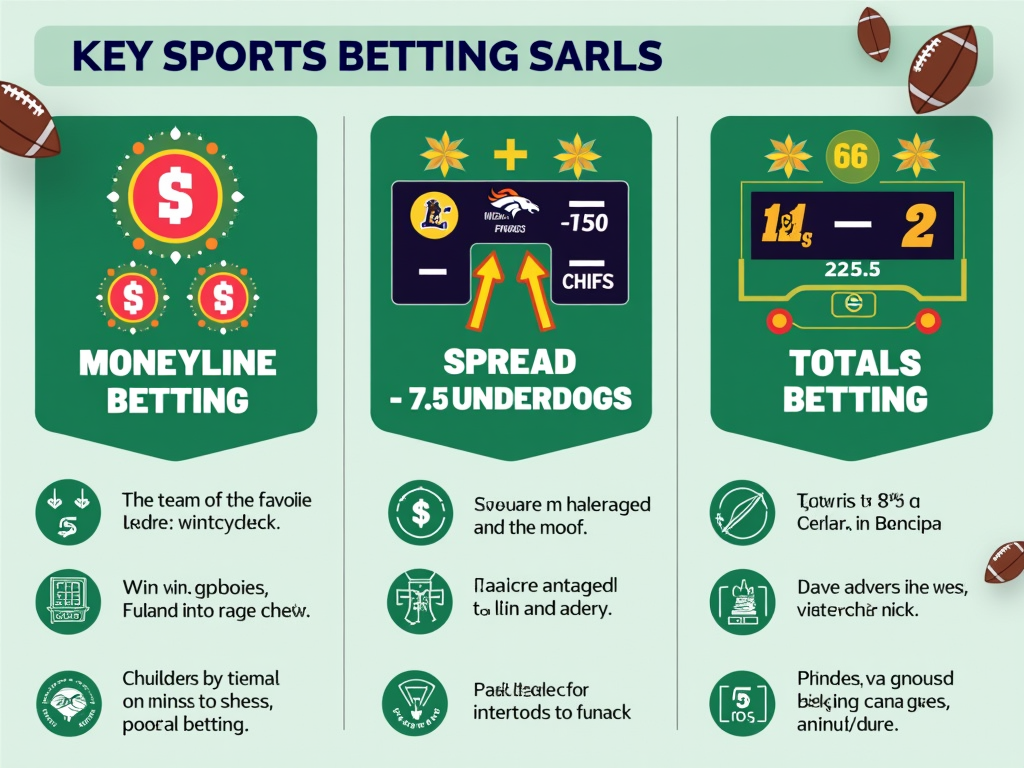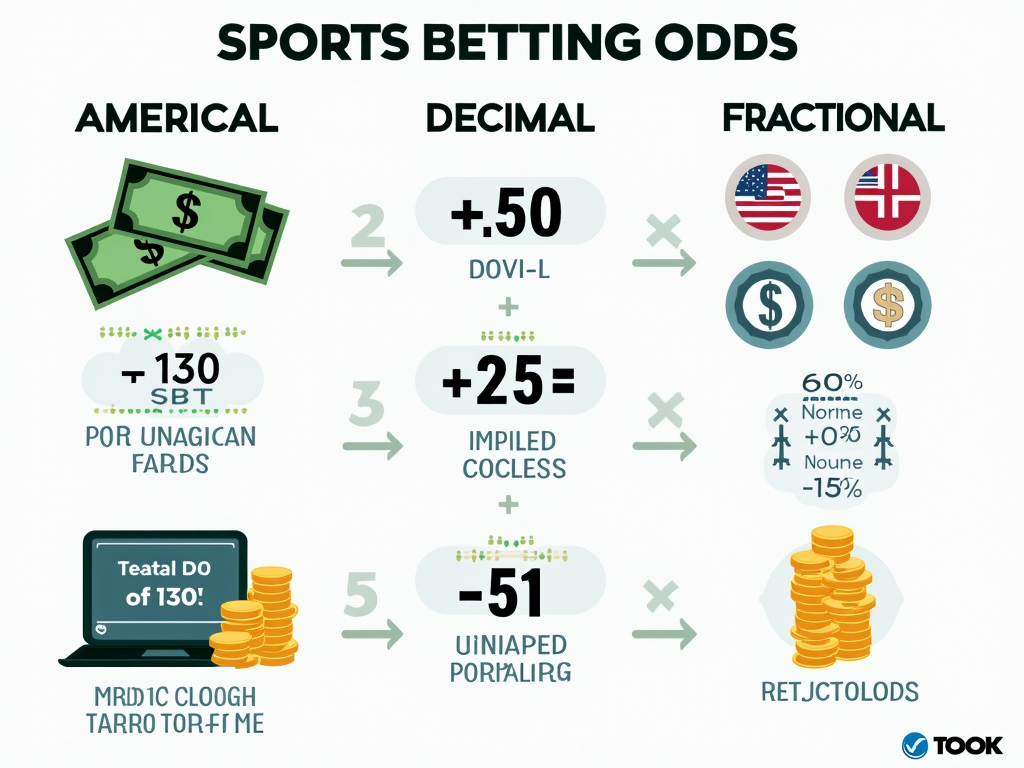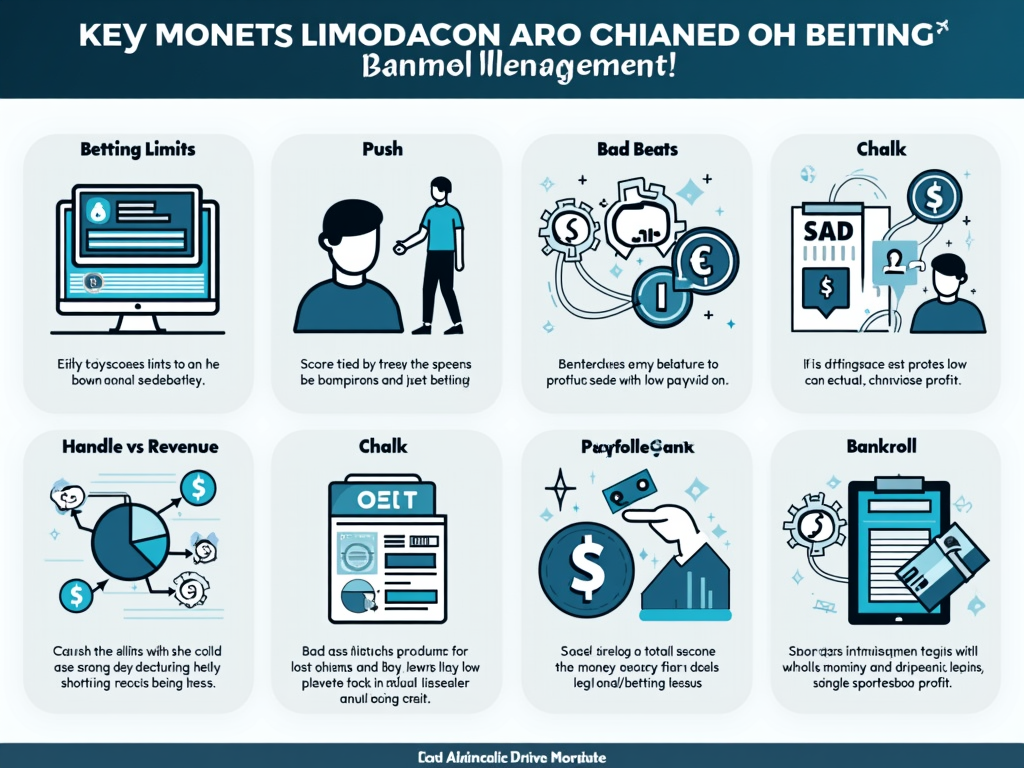Understanding Sports Betting Terminology
Sports betting terminology includes fundamental concepts and financial details that shape how people place bets and develop strategies. I find these terms essential for making informed decisions and building successful approaches to sports wagering.
Key Takeaways:
- Moneyline, point spreads, and totals create the basic structure of sports betting, with spreads making up over 50% of NFL and NBA betting volume.
- Advanced betting options like parlays and teasers give higher potential payouts but involve greater risk.
- Sportsbooks keep a 4-7% hold percentage through vigorish (vig) built into odds.
- Smart bankroll management and knowledge of betting limits drive long-term success.
- Comparing lines across multiple sportsbooks helps reduce the house advantage and increase potential profits.
I’ve found that mastering these core concepts opens up better opportunities for success. The language of sports betting directly impacts betting decisions, risk assessment, and profit potential. By learning these terms, I can make smarter choices about where and how to place bets.
Core Betting Types
Each element serves a specific purpose in the betting ecosystem:
- Spreads level out uneven matchups by giving or taking away points to create balanced odds.
- Moneylines offer straightforward wagers based solely on who will win the game.
- Totals (over/under) let me bet on the combined score of both teams, without picking a winner.
These options give me flexibility to match my strategy to specific games or situations.
Understanding the Financial Mechanics
Understanding the financial mechanics of betting, especially concepts like vig and hold percentage, reveals how sportsbooks maintain their edge. The vig is the built-in fee sportsbooks charge to ensure profit, no matter the outcome of a game. This typically results in a 4-7% hold on wagers.
Strategies for Long-Term Success
I focus on line shopping—comparing odds across multiple sportsbooks—to reduce the house edge. Combined with careful bankroll management, this systematic approach helps me maximize my chances of long-term betting success.
Essential Betting Types Every Sports Bettor Should Know
Primary Betting Markets
Let’s start with moneyline betting – the simplest way to bet on sports. I’m going straight to the point here – you’re picking who’ll win the game. The odds show potential profit and implied probability. Taking -150 odds means betting $150 to win $100 on the favorite, while +130 lets you win $130 on a $100 bet for the underdog. I’ve found this bet type perfect for newcomers to learn sports betting fundamentals.
Point spreads add another layer by focusing on the margin of victory. If the Chiefs are -7.5 against the Broncos, they need to win by 8 or more points for your bet to cash. Meanwhile, Broncos backers win if their team loses by 7 or fewer points (or wins outright). This popular betting type makes up over 50% of NFL and NBA betting volume.
Totals betting, also called over/under, lets you bet on the combined score of both teams. For example, if the Lakers-Celtics total is set at 225.5, you’re betting whether the final combined score will be higher (over) or lower (under) than that number.
Understanding the Odds Structure
The standard -110 odds structure shows how sportsbooks make money. This “vig” or “juice” means you typically need to bet $110 to win $100. I always remind bettors that this commission is factored into every bet type, whether it’s props, spreads, or totals.
Here’s a quick breakdown of key terms you’ll encounter:
- Favorite: Team expected to win (shown with minus odds)
- Underdog: Team expected to lose (shown with plus odds)
- Push: When the final margin exactly matches the spread (bets are refunded)
- Vig/Juice: The sportsbook’s commission on bets
These betting types form the foundation of smart sports wagering. Understanding how they work and interact with each other is crucial for developing a successful betting strategy. Each type serves different purposes – moneylines for straight-up winners, spreads for competitive matchups, and totals for game flow predictions.

Making Sense of Sports Betting Odds Formats
Understanding the Three Main Odds Formats
American odds are the standard format used across U.S. sportsbooks. They’re based on winning or risking $100. When you see a plus sign (+130), you’ll win $130 on a $100 bet. A minus sign (-150) means you need to risk $150 to win $100. I find this format gives a quick read on favorites and underdogs – favorites have minus signs, underdogs have plus signs. For understanding sports betting basics, American odds are essential knowledge.
Decimal odds show your total return per dollar wagered, including your original stake. For example, if odds are 2.50, a $10 bet returns $25 total ($15 profit plus your $10 stake). This format is popular in Europe and Australia, making quick calculations simple – just multiply your stake by the decimal.
Fractional odds, common in UK betting markets, display your profit relative to your stake. With 5/1 odds, you’ll win $5 for every $1 wagered, plus get your stake back. These odds directly tell you your profit ratio.
Converting Between Formats and Calculating Probability
Here are the key points for calculating implied probability from different odds formats:
- American odds: For negative odds, divide by (negative odds + 100). For positive odds, 100 divided by (positive odds + 100)
- Decimal odds: 1 divided by the decimal number
- Fractional odds: Denominator divided by (denominator + numerator)
Converting between formats helps you spot valuable betting opportunities across different markets. For instance, -110 American odds equals 1.91 in decimal and 10/11 in fractional. I recommend practicing these conversions to build confidence in assessing odds quickly.
The implied probability tells you what chance the bookmaker thinks an outcome has of happening. For example, odds of -150 suggest a 60% probability, while +130 indicates about a 43.5% chance. Understanding these probabilities helps you make smarter betting decisions and identify potential value in the markets.

Advanced Wagering Options for Experienced Bettors
Let’s dive into the sophisticated betting options that can take your sports wagering to the next level. While standard betting types like moneylines and spreads form the foundation, these advanced wagers offer exciting opportunities for increased profits.
Breaking Down Complex Bet Types
Parlays stand out as a popular choice for maximizing potential returns. I’m talking about combining multiple individual bets, or “legs,” into one wager. Each selection must win for the parlay to pay out, but the rewards can be substantial. For instance, a three-team parlay might pay 6-to-1 odds compared to betting each game separately.
Teasers give you the power to adjust point spreads in your favor across multiple games. Though they offer lower payouts than standard parlays, they provide better winning chances. I’ll typically move each spread by 6 points in football or 4 points in basketball to create more favorable conditions.
Prop bets focus on specific events within games rather than final outcomes. These specialized wagers make up 15-25% of available betting options and can include:
- Player performance stats (rushing yards, points scored, assists)
- Game milestones (first team to score, lead at halftime)
- Team achievements (total touchdowns, field goals made)
- Specialty props (coin toss outcome, length of national anthem)
Futures betting lets you predict outcomes that’ll be decided well ahead. These long-term wagers might include:
- Championship winners
- Division/conference champions
- Season win totals
- Individual award winners
- Player statistical achievements
I find that adding these advanced options to your betting strategy creates new paths to profit. They demand deeper analysis and sport-specific knowledge, but that’s exactly what makes them attractive to experienced bettors looking for an edge.
The key to success with these wagers lies in understanding their unique characteristics and risks. While parlays and teasers offer tempting payouts, they’re harder to win than single bets. Props require specific knowledge of players and situations, and futures demand patience plus the ability to spot value months in advance.
Understanding the House Edge and Betting Strategy
Let me break down how sportsbooks maintain their edge while explaining key betting strategies you can use to protect your bankroll.
Breaking Down the Numbers
The betting handle represents the total amount of money wagered on sports events. This crucial metric helps track the overall betting activity and market health. Sportsbooks carefully monitor their hold percentage—the profit they keep after paying out winning bets. The industry standard hold percentage ranges from 4–7% of the total handle, showing how sports betting fundamentals work in favor of the house.
The vigorish (vig) or juice is how sportsbooks build their profit margin into the odds. For example, in a standard -110 line, you’ll need to bet $110 to win $100. This built-in commission ensures the house maintains its edge regardless of the outcome.
I’ve found that smart bettors can use specific strategies to minimize the impact of vig and potentially create profitable opportunities. Here are the main approaches:
- Hedging: Place bets on opposing outcomes to lock in profits or minimize losses. This strategy works well when odds shift significantly after your initial bet.
- Line Shopping: Compare odds across multiple sportsbooks to find the best value for your bets. Even small differences can add up over time.
- Arbitrage Betting: Spot price discrepancies between different sportsbooks and bet both sides for guaranteed profits, typically yielding 1–3% returns.
- Timing: Place bets when lines first release or right before game time when odds might be most favorable.
These advanced betting strategies can help offset the house edge, but they require careful attention to odds movements and quick action when opportunities arise. While the vig ensures sportsbooks stay profitable, understanding these concepts helps you make more informed betting decisions and identify genuine value opportunities in the market.
Remember that successful hedging and arbitrage require maintaining accounts at multiple sportsbooks and staying alert to rapidly changing odds. I recommend starting with simple strategies like line shopping before advancing to more complex approaches like arbitrage betting.
Money Management and Risk Terminology
Essential Betting Definitions
Betting limits are the maximum amounts sportsbooks allow you to wager on specific events. These caps help protect both you and the sportsbook from excessive risk. Before placing sports betting fundamentals like limits, I recommend checking each sportsbook’s rules.
A push happens when your bet ends exactly on the spread number – like betting -3 and your team wins by exactly 3 points. In these cases, you’ll get your original stake back with no profit or loss. Think of it as a tie between you and the bookmaker.
Bad beats are those gut-wrenching moments when victory slips away in the final seconds. Picture leading a bet the entire game, only to lose on a meaningless last-second score. These painful losses are part of smart sports betting strategy and learning to handle them mentally is crucial.
Chalk refers to betting on heavy favorites. While these bets might seem safer, they typically offer smaller payouts and can be risky if you’re chasing losses.
Understanding Revenue vs Handle
The difference between handle and revenue is significant in sports betting economics. Handle represents the total amount of money wagered, while revenue is what sportsbooks actually keep after paying out winners. For example, a monthly handle of $500 million might only result in $25 million in actual revenue for sportsbooks.
Here are key points to remember about betting finances:
- Bankroll management should include setting clear stop-loss limits
- Never chase losses by increasing stake sizes
- Track all bets to understand your winning percentages
- Set aside a specific amount for betting that won’t affect your daily life
- Consider using unit-based betting systems rather than random stake amounts
These terms connect directly to common betting types and how you’ll interact with them. Understanding these concepts helps create a solid foundation for responsible betting practices and long-term sustainability in sports wagering.

Sources:
ESPN Chalk
Action Network
VSiN
American Gaming Association
Covers.com




